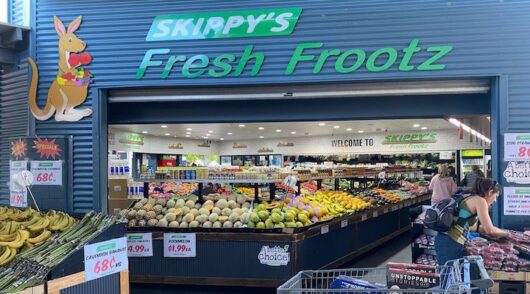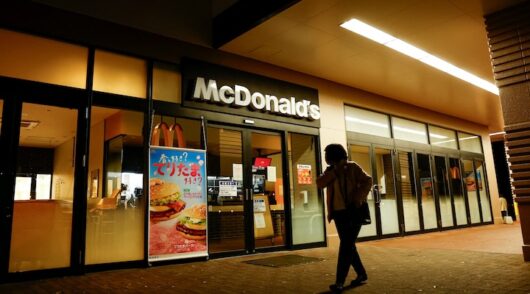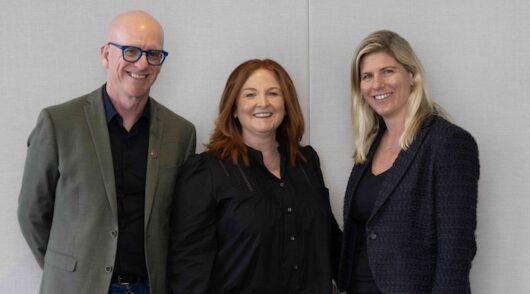Growing consumer expectations of free delivery and free returns are placing pressure on retailers who on one hand recognise customer demand, but on the other are trying to reduce their operating costs.
Sophia Pope is the sales and customer success leader for ShipStation, a leading web-based order management and shipping software designed to help retailers efficiently process, fulfil and ship their e-commerce orders. She spoke to Amie Larter for Inside Retail’s new podcast series Retail Untangled.
She said that more than one-quarter of retail businesses polled in ShipStation’s latest research plan to increase delivery charges for customers this year, and 10 per cent plan to increase the cost of returns.
“Our research globally shows a huge misalignment between customers and retailers regarding who should foot the bill for delivery charges.”
Retailers faced with rising delivery costs driven by shippers can implement several strategies to mitigate the problem, said Pope.
“One is a multi-carrier strategy. We try to say to retailers, the best way to get on top of these costs is to diversify your carriers so you are able to mitigate the shipping costs. You can compare the rates, retailers can then choose the lowest rates and then they can pass it on to the customer who knows they are getting the best rate.”
Even just knowing that precise delivery cost, a retailer can absorb it into their product price, knowing they are no longer guessing, she explained.
Another strategy, she says, is to automate fulfilment. “This really helps reduce any kind of operating overheads and creates the necessary efficiencies, and those cost savings can be passed on to the consumers.”
Meanwhile, return rates are another pain point for retailers selling online with as many as 30 per cent of purchases being sent back – significantly higher than the typically under 10 per cent level of in-store purchases.
Pope suggested retailers can try to reduce returns – and thus their costs – by ensuring listings online are as detailed as possible and promoting customer reviews. This is especially true with women’s apparel, for example.
“We’ve all got different body shapes, so when you go to buy something it can be really difficult.”
Seeing other people buying items and noticing they have a similar body shape helps give customers more confidence in choosing an item, she said. “Try to get the community involved in that and make sure the descriptions are as detailed as possible.”
Some larger global retailers, including Zara and Boohoo, are introducing surcharges on returns, as they try to reduce bracketing – the practice where shoppers buy four items, for example, knowing they will only take one and return the other three because they cannot make up their minds ordering online. Others might order two or three sizes of the same item and return the ones that don’t fit.
“It’s not great for the environment, but it’s a massive trend,” said Pope. “So retailers are trying to reduce that, and surcharges really put people off.”
Another returns trend Pope cited is of retailers forcing people to take unwanted items in-store, introducing a friction so people are less inclined to bracket.
Meanwhile, there are stark generational differences in returns behaviour, said Pope. Younger generation consumers are more accepting of the concept of return charges: 40 per cent of Gen Z said they would consider paying for online returns compared to 22 per cent of boomers. Pope believes younger consumers are more aware of the sustainability considerations of returns than older generations.
“When retailers develop returns policies they need to consider who is their audience and what strategy will actually work.”
That sustainability mindset provides an opportunity for retailers to engage with Gens Y and Z, she said. “Sustainability isn’t going to go anywhere and consumers are more conscious than ever about their purchases and the effect they are having on the environment. But people are also attuned to greenwashing. So retailers really need to be careful with what they are promoting to ensure it does not conflict with their messaging.”
When it comes to sustainability, ShipStation’s research shows that in the current economic climate, consumers are sensitive to price and so paying for fully ‘green’ options, might be “a deal breaker” right now.
That aside, 26 per cent of shoppers are planning to buy secondhand and one in four shoppers are planning to use resale marketplaces more often this year.
“There’s no stigma these days around thrift shopping, or secondhand shopping – that is going to be very, very common.” Underpinning her view is that some multinational brands have added a pre-loved section to their website and offered consumers credits if they return some of their items. “That’s been super successful for them.”
Pope says retailers need to adopt sustainability as a core value of their business because consumers are sensitive to greenwashing. They should not just talk about the concept in the hope of gaining extra sales – they should do it because they want to do their bit for the environment.
“They should start small, try and make a difference, and really look at their messaging.” For example, is there a conflict in their messaging by promoting a green option yet promoting returns?
“Returns have the biggest carbon footprint. They go out, they come back. Is that conflicting? We hear time and time again that retailers need to be authentic, they need to understand where they stand on their vision and their values.”
Listen to the full podcast with Sophia Pope online here, including more insights into consumer behaviour surrounding sustainability and returns – and how it is “super important” for retailers to get their tech stack right to optimise customer engagement, yet minimise overheads.






